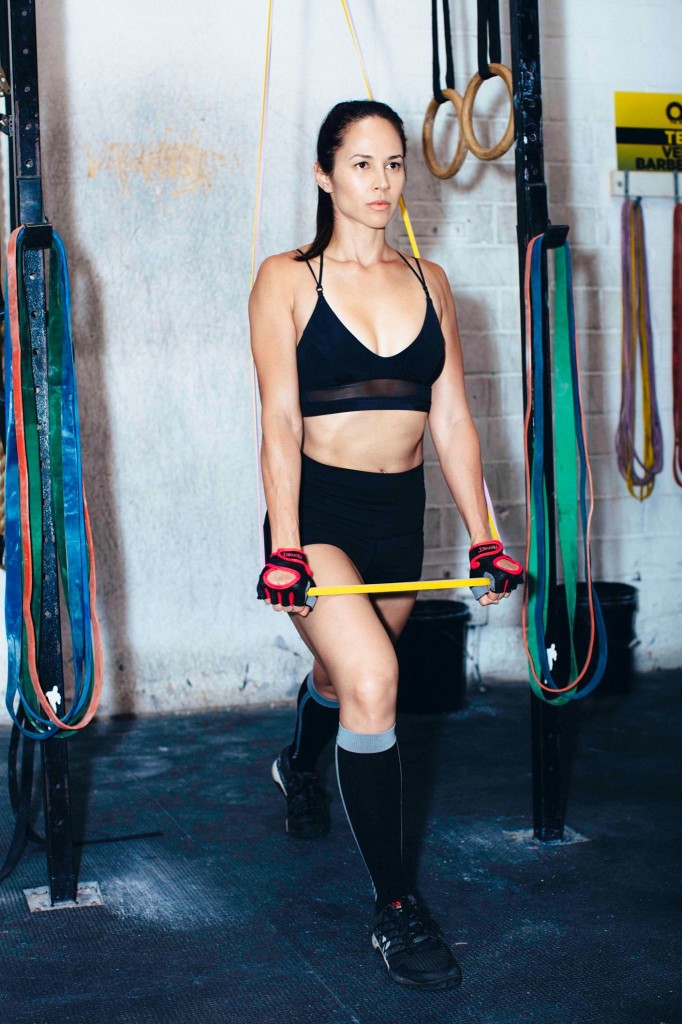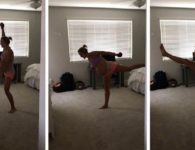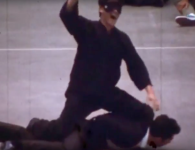Depending on where you are in the world, January can be a bit of an odd time for fitness. On one hand, many of us are excited and motivated to tackle resolutions and new fitness goals for the new year. For anyone living in an area that gets less than mild winter weather at this time of year, though, it’s not always easy to tackle our new routines and challenges as regularly and as unimpeded as we’d like. For people who exercise outdoors, like distance runners, snow and cold temperatures can put a serious dent in your ability to safely stick to your training program. More severe weather can also mess with people who train indoors if their gym or dojo needs to close for a snow day or two during a storm — or even a weather-related issue like a burst pipe. For those of us who are somewhat less enthusiastic about exercise, inclement weather also poses another problem: if you’re already not thrilled about going outside to train, cold, sleet, and/or snow is going to make leaving the house even less appealing, which can really put a damper on the motivation that you’re trying so hard to cultivate.
If you do find yourself trapped at home with few other exercise options, though, all hope is not lost. There are plenty of workouts that you can do without setting a foot outside this winter. As a former fitness professional who has an allergy to cold weather (yes, that’s a real thing) I’ve come up with all sorts of exercises from all sorts of disciplines to help me stay as fit and healthy as possible while I’m housebound. In this week’s blog, I’d like to share five of my favorite workouts with to help get you through the next few months:
The Basic Bodyweight Workout
There’s nothing particularly flashy about this workout, but this combination of tried, tested and true basics is a simple and straightforward way to get in a full body workout when space and equipment are limited. Do 2-4 sets of each of these 5 exercises with 1 minute of rest between sets to keep all of your major muscle groups working until you can get back to the gym.
– 20 push-ups (These can be done from the feet, knees, or against a wall, depending on skill level)
– 6 pull-ups (Either full or modified with a pull-up bar. If you don’t have a bar, here are some substitute options. If you have any wrist concerns or don’t want to develop calluses, you can also wear a pair of fitness gloves for this exercise.)
– 30 squats
– 20 hip raises (can be done as 2 sets of 1-legged hip raises for an extra challenge)
– 30 second plank
The Burpee Pyramid
If you’re looking for a higher intensity full body workout, these sets of burpees are one of the hardest and most fun exercise routines that you can execute in just a few square feet of free space. The burpees (which can be done with our without a push-up from the plank position, depending on your strength and skill level) will challenge your strength and cardiovascular fitness and the jumping jack breaks provide just the right amount of working recovery between rounds.
After a brief warm up (like 5 minutes of marching on the spot, or a dynamic stretching routine), try 2-3 ladders with 2 minutes of rest in between.
Ladders can be done in descending and ascending order and and can start with any number of reps. Here’s an example of a descending ladder that starts at 10 and includes a total of 55 burpees:
– 10 burpees
– 10 jumping jacks
– 9 burpees
– 10 jumping jacks
– 8 burpees
– 10 jumping jacks
– 7 burpees
– 10 jumping jacks
– 6 burpees
– 10 jumping jacks
– 5 burpees
– 10 jumping jacks
– 4 burpees
– 10 jumping jacks
– 3 burpees
– 10 jumping jacks
– 2 burpees
– 1 burpee
– 10 jumping jacks
Ascending ladders start with the minimum number of burpees and work in the opposite direction. I recommend starting with the descending version first. It’s a little easier, at least psychologically, to get the biggest set out of the way off the top. If starting with 10 is too much for you at your current fitness level, try shorter sets that start at 5 and work down to 1. If you need more of a challenge, you either try a higher number of max reps, or a pyramid, which starts at 1, goes up to your max reps, and back down to 1 again.
Stair Climbing
If you usually do your cardio outside and need a backup plan when the weather gets too rough (or when the cold threatens to dull your motivation), the stairs are a great indoor alternative for both steady state and interval training. Whether you’re in an apartment with a stairwell or a home with its own stairs, set a time and a set number of reps and start climbing, either at a regular pace or alternate between sprints and walking. If you don’t have access to stairs, a step or a stable stool can also be used for aerobic exercise, like this classic Step routine from 1992 that might look a bit absurd by today’s standards but is still a pretty effective aerobic workout:
Shadowboxing
Whether you’re actually trained in striking martial arts or know the basics of a few punches, shadowboxing is a great cardio exercise that might just end up working some muscles you didn’t even realize needed a little extra attention along the way. Unless I’m doing Muay Thai extremely regularly, I’m always a little surprised at just how much DOMS (delayed onset muscle soreness) I feel the day after a serious shadowboxing workout.
There are a number of ways to do a shadowboxing routine at home. You can do rounds of freeform boxing (with your gloves if you want to add some extra weight and challenge) for 3-minute rounds with 1 minute of rest in between. You can also try doing your shadowboxing Tabata-style. And, speaking of old school aerobics that still get the job done, you could also try some Tae Bo if you need more guidance in your workout.
Take an Active Recovery Day
Replacing your outside workout isn’t the only option. You can also treat a day trapped inside as a recovery day. An active recovery day. Take stock of how your body’s feeling, and put together a restorative yoga or stretching routine that will help you take care of any aches and pains you might be feeling from your regular training and help prevent future injuries. One of my favorite active recovery techniques is foam rolling. Here’s a good introduction to the topic if you’ve never rolled before:
– by Sarah Kurchak
Do you have a favorite indoor workout routine? How do you cope with maintaining your fitness and martial arts routines in the winter? Let us know in the comments!
And check out our online store. Wherever you’re training, we’ve got the fitness and martial arts supplies you need to reach your full potential.




















